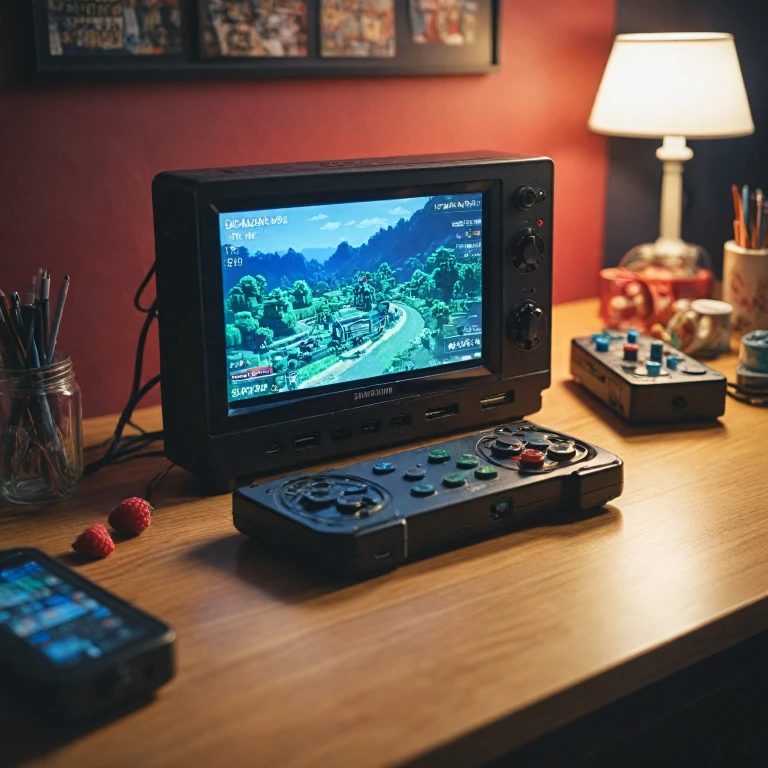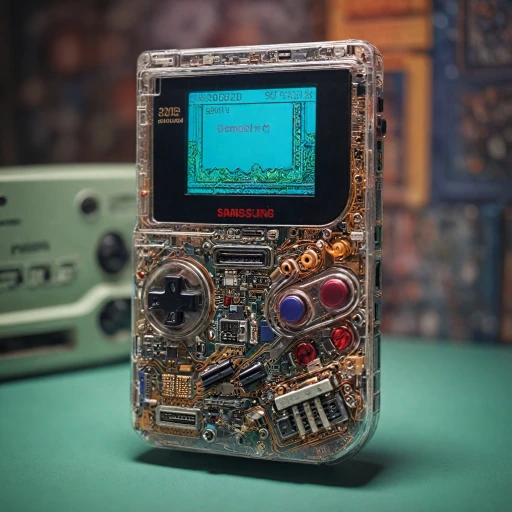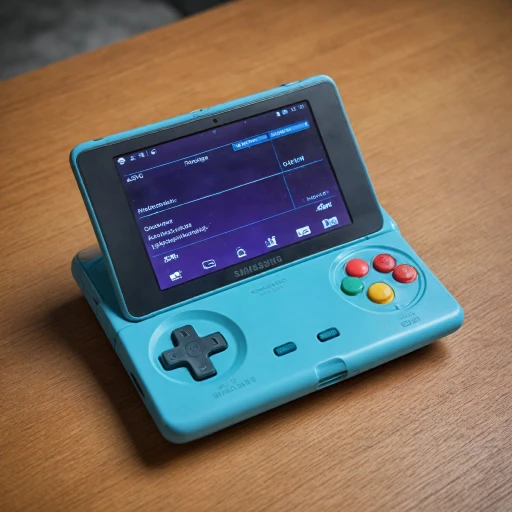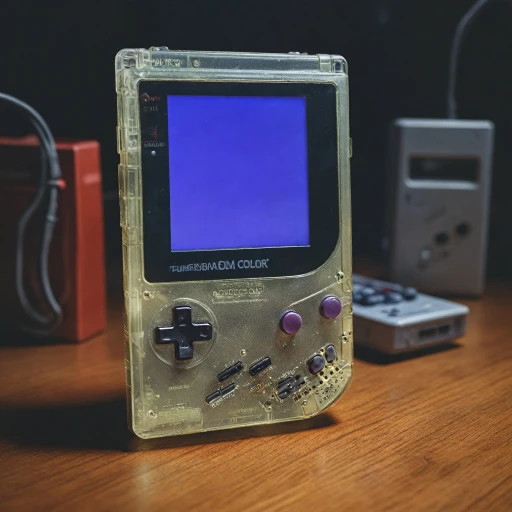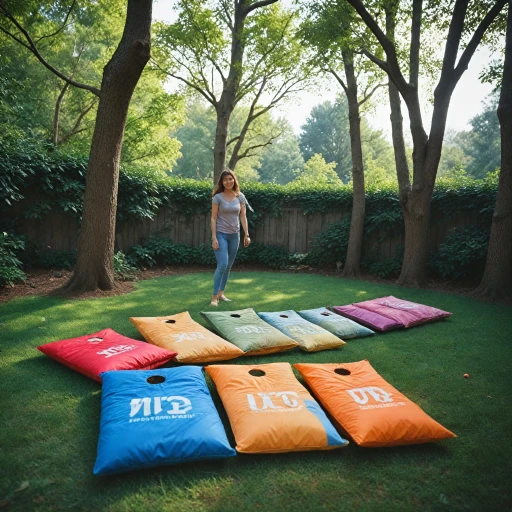Understanding the Raspberry Pi: A Brief Overview
Introducing the Versatile Raspberry Pi
The Raspberry Pi is a small, low-cost circuit board that offers a wide array of possibilities, making it a favorite choice among tech enthusiasts and hobbyists. With various models available, each Raspberry model offers different specifications to suit diverse needs. Known for its flexibility, the Raspberry can be transformed into various projects, a portable gaming console being one of the most popular options.
The Heart of Your Gaming Console
What makes the Raspberry Pi a standout choice for a handheld gaming console is its compact size and customizable nature. It easily integrates with other components, such as a display screen, power supply, and case, to create a functional game console. Users often build their consoles with a kit, which includes elements like a case or buttons to enhance the gaming experience. The combination of these components in a kit raspberry setup will definitely cater to the needs of retro gaming enthusiasts.
From Simple Computer to Powerful Gaming
While the Raspberry Pi's primary function is as a basic computer, its true allure lies in its potential when coupled with software like Retropie. This transformation elevates the Raspberry into a retro gaming powerhouse, capable of playing digital versions of your favorite classic games. It supports various emulators, allowing users to experience a variety of games that once ran on older console systems.
Shipping Your Gaming Dreams to Reality
When considering the move to build your own Raspberry Pi handheld game, think about the components you'll need, many of which are available with free shipping. Depending on your requirements and technical skill level, you might choose between starter kits or more advanced configurations that include GPIO pins integration and a sturdy case.
For those curious about tech advancements in compact gaming, the Miyoo Mini Plus showcases another exciting development in this arena.
Why Choose a Raspberry Pi for Handheld Gaming?
Advantages of Opting for a Raspberry Pi in Gaming
Choosing a Raspberry Pi as your handheld gaming console offers a unique blend of flexibility and affordability. This versatile little computer board can be transformed into a powerful gaming device with the right setup and accessories. Here's why it might be the best choice for your next gaming project:
- Cost-Effective: Compared to traditional gaming consoles, a Raspberry Pi is significantly cheaper. You can get a starter kit with a Raspberry Pi board, case, and power supply at a fraction of the cost of mainstream consoles.
- Customization: The Raspberry Pi allows for extensive customization. You can choose from various cases, displays, and buttons to build a console that suits your personal style and needs. This makes it an exciting project for DIY enthusiasts.
- Portability: With the right case and screen, your Raspberry Pi can become a truly portable handheld game console. It's compact enough to fit in small spaces, even an altoids tin, making it easy to carry around.
- Versatility: Beyond gaming, the Raspberry Pi can function as a desktop computer, allowing you to watch video, browse the web, or even work on programming projects.
- Community Support: The Raspberry Pi community is vast and supportive. Whether you're looking for troubleshooting tips or new game ideas, there's a wealth of resources and customer reviews available online.
For those interested in retro gaming, the Retropie Raspberry setup offers a fantastic way to relive classic games. With a wide array of emulators available, you can play games from various consoles, making your Raspberry Pi a versatile gaming powerhouse.
If you're curious about other unique gaming systems, you might want to explore this timeless board game for a different kind of gaming experience.
Setting Up Your Raspberry Pi Handheld Game Console
Embarking on Your Portable Gaming Project
So, you're looking to transform your Raspberry Pi into a handheld gaming console. It's an exciting project that combines creativity, technical skills, and a pinch of nostalgia for retro gaming enthusiasts. To begin, you'll need a kit that includes a raspberry model and a few essential components, such as a case, a small screen for display, and a power supply. A starter kit often comes with a free shipping option, which can be a convenient choice to get your build up and running. The heart of your device is the circuit board, which houses the processing power required to play games and watch video content. Make sure your chosen Raspberry Pi model supports the add-ons you plan to use. With retropie, you can emulate many classic games that will definitely revitalize your gaming library. GPIO pins on the board allow you to connect various components, such as buttons, to interact with your games effectively. When choosing buttons, reliability is key. Reading customer reviews can help you find options that are highly recommended by other enthusiasts. The case is an often-overlooked part of the build, but it's crucial for both protecting the components and for your comfort when handling the handheld game console. Some opt for unique solutions, like an altoids tin, which offers a vintage feel, while others choose ergonomically designed cases tailored exactly for their setup. During the assembly, follow instructions from the kit raspberry and don’t hesitate to pause and seek more in-depth guides if needed. This project, sometimes likened to building a compact desktop computer, is not just about the finished product but the learning process and personal satisfaction of creating something tailored just for you. If you get stuck or need inspiration, there are numerous resources focused on the allure of retro gaming to keep you motivated. This hands-on project lets you customize a gaming platform that evolves with you.Customizing Your Gaming Experience
Tailoring Your Gaming Adventure
Once your raspberry handheld is up and running as a portable gaming console, it’s time to fine-tune your setup to enhance your gaming experience. The beauty of a Raspberry Pi based project lies in its flexibility, allowing you to customize almost every aspect of the build.
Choosing the Right Case and Controls
Selecting the best case for your project is crucial not only for aesthetics but also for functionality. There are a variety of cases available, ranging from rugged designs to minimalist altoids tin solutions. Cases often come with free shipping and additional features, such as integrated buttons and control panels. Aim for a starter kit that includes these essentials and matches the raspberry model you’re working with.
Configuring the Display
The screen, or display, is another critical component. It should be vibrant and appropriately sized to ensure retro gaming is enjoyable. Whether you’re playing classic games on your handheld game console or watching video clips, a crisp display will definitely enhance the experience. Some kits offer screens with higher resolutions, which are highly praised in customer reviews.
Fine-Tuning Software for Games
Utilize software tools like Retropie for harnessing the power of emulation. With Retropie, raspberry handhelds can efficiently run a multitude of gaming emulators. It’s essential to select games that will work smoothly on your chosen raspberry model. Take the time to explore various game options and emulators that can run on Retropie Raspberry, enhancing your overall gaming adventure.
Utilizing GPIO Pins and Final Adjustments
Ready for a bit more complexity in your build? Tapping into the GPIO pins of your circuit board can open new doors for customizing your controls and adding more features to the console. However, this requires a good understanding of electronics, so approach this step with caution. Once your setup is to your satisfaction, ensure the power supply is stable and everything is functioning as expected.
Gathering Project Resources
Reading through customer reviews and online forums can provide excellent insights into potential bottlenecks and innovations. Each project is unique, and as you gather components and kits raspberry, understanding past experiences will definitely inform the best solutions. A properly configured Raspberry Pi
Exploring Game Options and Emulators
Variety of Games and Emulators
When exploring game options for your Raspberry Pi handheld game console, you're in for a treat. The Retropie Raspberry setup allows you to transform your device into a versatile gaming machine. This configuration will definitely provide access to a plethora of retro gaming experiences. From NES and SNES classics to play games from more sophisticated consoles like the PlayStation, your handheld gaming device will work with numerous emulators.
Accessing Game Libraries
Your Retropie-based Raspberry Pi console can host a variety of game libraries. It’s essential to ensure that the games you choose are compatible with your Raspberry model and the emulators you have installed. Additionally, there are many videos available online that will guide you through the process of transferring games to your device, ensuring you're ready to enjoy your favorite titles on the move.
Customizing Your Game Selection
Customizing the game selection for your board could involve either sourcing your own game ROMs or exploring free options available in open-source domains. Be mindful that while some retro games can be freely distributed, others might require you to own the original copy to comply with legal standards.
User Experience and Controls
As you dive into playing, adjusting your control configuration can enhance your gaming experience. Whether tweaking the buttons on your Raspberry case or utilizing the GPIO pins for additional control inputs, you’ll find your project will allow for significant personalization. This setup not only brings back the nostalgia of retro gaming but also provides a unique opportunity to refine your skills at assembling and programming a custom handheld.
Evaluating Customer Reviews
Before finalizing your gaming options, consider checking customer reviews of similar setups. Feedback from other enthusiasts can offer valuable insights into the best games that perform well on your setup, potential issues, and useful tweaks. This can aid you in optimizing the effectiveness of your build and ultimately delivering the best gaming experience suited to your preferences.
Troubleshooting Common Issues
Addressing Common Glitches and Hiccups
When you've embarked on your journey building a handheld game console using the Raspberry Pi, it's inevitable to encounter some technical roadblocks. Here are a few common issues and the solutions that can be applied to ensure your kit functions smoothly:- Power Supply Problems: If your console isn't powering on, double-check the power supply. Ensure that the power unit suits your Raspberry model, and that it delivers the correct voltage and amperage. A stable power supply is critical for the system to boot and function properly.
- Display Issues: A flickering or unresponsive screen can be due to improper connectivity. Confirm that the screen's connections to the GPIO pins are secure. Verify that the display and the board are compatible; mismatched components might not work well together.
- Button Malfunction: Buttons are integral for any gaming experience. If they are non-responsive, examine the wiring or connections on the circuit board. The Retropie interface might need reconfiguration to acknowledge the button inputs appropriately.
- Software Failures: If games are not loading or the system crashes, ensure that the Retropie software is correctly installed. Sometimes, re-imaging the SD card with a clean installation can fix such issues. Additionally, updating Retropie to its latest version can iron out known bugs.
